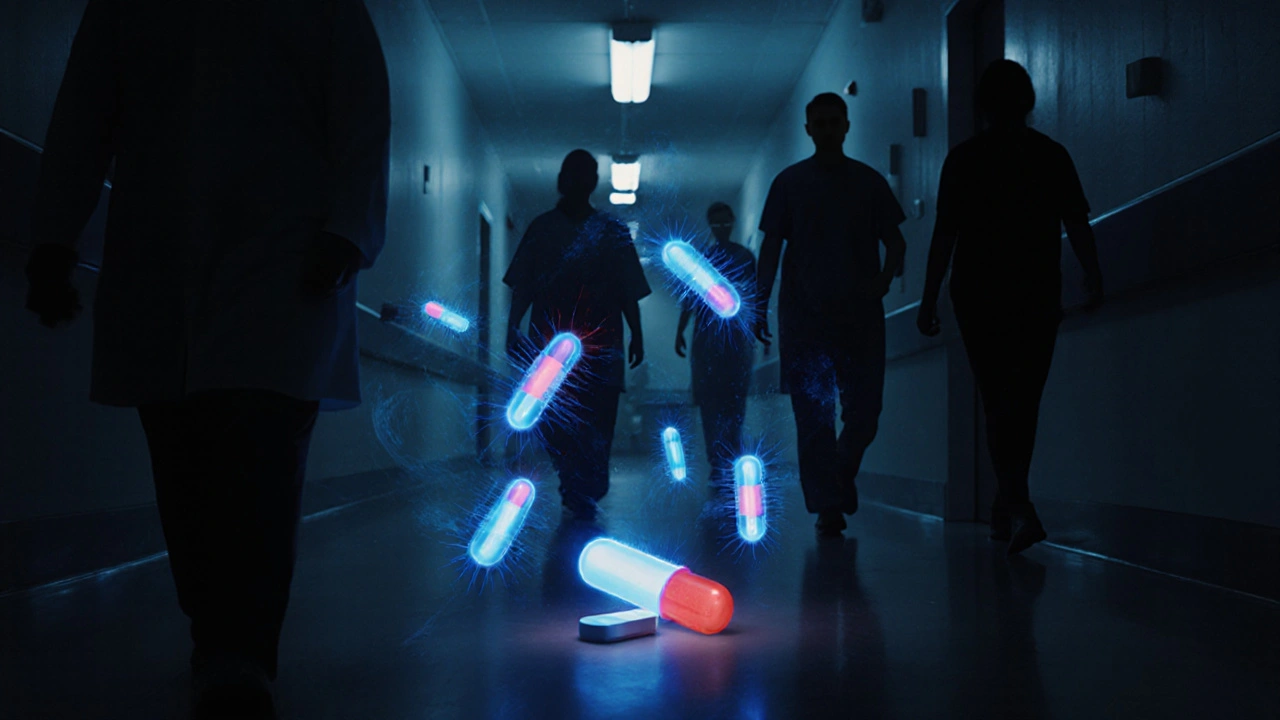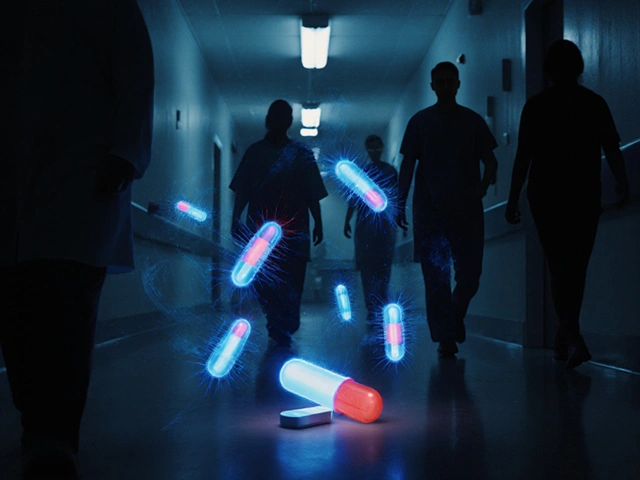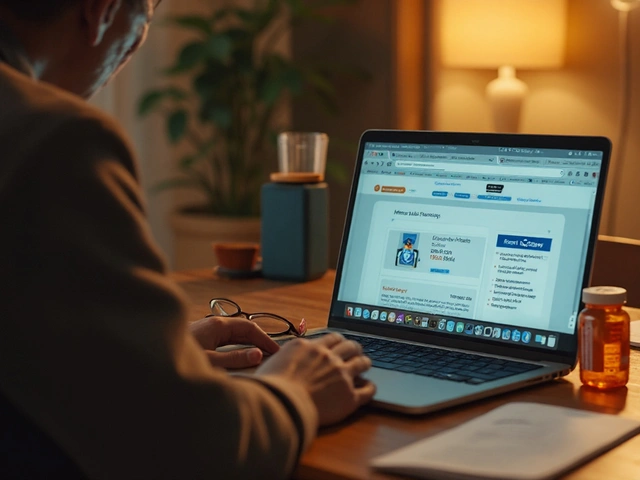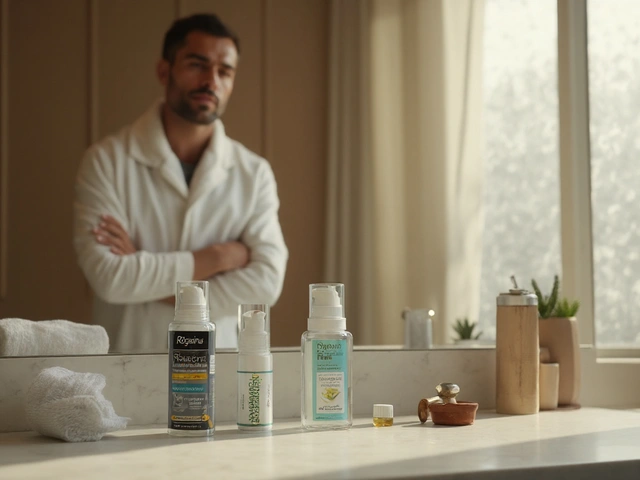Every time you take an antibiotic when you don’t need it, you’re not just helping yourself-you’re helping bacteria become stronger. That’s the harsh truth behind the rise of antibiotic overuse and its dangerous consequences: drug-resistant infections and life-threatening cases of Clostridioides difficile (C. difficile). This isn’t science fiction. It’s happening right now, in hospitals, nursing homes, and even in your own neighborhood.
What Happens When Antibiotics Don’t Work Anymore?
Antibiotics are powerful tools-but only when used correctly. They kill bacteria, not viruses. That means they do nothing for colds, flu, or most sore throats. Yet, nearly 30% of antibiotic prescriptions in the U.S. are unnecessary, according to CDC data. Globally, the problem is worse. In 2023, one in six bacterial infections were already resistant to standard antibiotics, and that number keeps climbing.Resistance doesn’t happen overnight. It builds up over years of overuse. When antibiotics are taken too often, too long, or at the wrong dose, the tough bacteria survive. They multiply. They pass on their resistance genes. Soon, the drugs that once saved lives stop working. We’ve seen this with common infections: urinary tract infections, pneumonia, and even simple skin wounds. In some places, 42% of E. coli cases no longer respond to first-line antibiotics like ampicillin or fluoroquinolones.
What’s worse? The last-resort drugs are failing too. Carbapenems, once considered the final defense against deadly infections, are losing their power. By 2035, resistance to these critical antibiotics could double compared to 2005 levels. And we’re not developing new ones fast enough. The antibiotic pipeline is dry. Only a handful of new drugs have reached the market in the last decade, and most are just tweaks of old ones.
C. difficile: The Hidden Cost of Antibiotic Use
One of the most direct and deadly results of antibiotic overuse is C. difficile infection. This bacterium lives quietly in many people’s guts-until antibiotics wipe out the good bacteria that keep it in check. Then, C. difficile takes over, causing severe diarrhea, fever, and life-threatening colon damage.In the U.S. alone, C. difficile caused nearly half a million infections in 2017. Around 29,000 people died that year, mostly older adults in hospitals or long-term care facilities. The CDC confirmed that antibiotic use is the single biggest risk factor. Even a single course of antibiotics can trigger it. Clindamycin, fluoroquinolones, and cephalosporins are especially linked to C. difficile outbreaks.
What’s scary is that this isn’t just a hospital problem. People are getting C. difficile after outpatient antibiotic use-after a simple sinus infection treatment or a dental procedure. Once someone gets infected, it’s hard to treat. Standard antibiotics often make it worse. The only reliable options are fecal microbiota transplants (FMT), which restore healthy gut bacteria, or expensive, last-resort drugs like vancomycin and fidaxomicin. And even then, recurrence rates hit 20-30%.
Why Is This Getting Worse?
The crisis didn’t happen by accident. It was built over decades by a mix of poor prescribing habits, patient demand, and broken systems.Doctors often feel pressured to prescribe. Patients walk in with a cough and say, “Can I get something for this?” Many believe antibiotics are a cure-all. Providers, under time pressure, give in-not because they want to, but because they don’t have time to explain why it won’t help.
Then there’s agriculture. More than 70% of all antibiotics sold globally are used in livestock-not to treat sick animals, but to make them grow faster or prevent disease in crowded, unsanitary conditions. These drugs enter the food chain, the water supply, and the soil. Resistant bacteria from farms spread to humans through meat, water, and even dust.
The COVID-19 pandemic made things worse. With hospitals overwhelmed, antibiotics were given more freely-often without testing. Infections that had been declining since 2012 started rising again. By 2021, hospital-based resistant infections jumped 20% compared to pre-pandemic levels. Prevention programs were sidelined. Hand hygiene dropped. Diagnostic testing slowed. And antibiotic use surged.

The Human and Economic Toll
This isn’t just about getting sick. It’s about dying from infections that should’ve been easy to treat.In 2019, antimicrobial resistance directly caused 1.27 million deaths worldwide. It contributed to another 4.95 million. That’s more than HIV/AIDS or malaria. By 2050, if nothing changes, resistant infections could kill 10 million people a year-more than cancer.
The economic cost is just as staggering. By 2030, the global economy could lose $3 trillion a year due to longer hospital stays, lost productivity, and failed treatments. By 2050, cumulative losses could hit $100 trillion. That’s more than the entire global economy in 2020.
Doctors are seeing the effects firsthand. A simple urinary tract infection now might require a week of IV antibiotics. Sometimes, there’s nothing left to give. As one infectious disease specialist put it: “Sometimes we don’t have anything effective to offer. That’s a terrible position to be in.”
What Can You Do?
You’re not powerless. Here’s what actually works:- Don’t ask for antibiotics. If your doctor says you have a virus, believe them. Ask what you can do to feel better without drugs.
- Take antibiotics exactly as prescribed. Never skip doses. Never save leftovers. Never give them to someone else.
- Ask if testing is needed. For sore throats, ear infections, or sinus issues, ask: “Could this be viral? Is there a test to confirm bacteria?”
- Choose antibiotic-free meat. Look for labels like “raised without antibiotics” or “organic.” Reduce your exposure to resistant bacteria from food.
- Wash your hands. Simple hand hygiene prevents infections-and reduces the need for antibiotics in the first place.
These aren’t just good habits-they’re public health actions. Every time you make a smart choice, you help slow resistance.

What’s Being Done?
There’s progress, but it’s slow. The World Health Organization launched the Global Antimicrobial Resistance and Use Surveillance System (GLASS), now tracking data from over 100 countries. The U.S. CDC runs antibiotic stewardship programs in hospitals to cut unnecessary use.Nonprofits like CARB-X are investing $480 million in new antibiotic research. But the market still doesn’t reward innovation. Developing a new antibiotic costs $1 billion-and it sells for pennies compared to drugs for chronic diseases. Pharmaceutical companies have little incentive to invest.
Some countries are trying new models. In the UK, doctors are paid bonuses for reducing antibiotic prescriptions. In Sweden, patients get educational materials before they’re prescribed. In the Netherlands, strict rules on farm antibiotic use have kept resistance rates among the lowest in Europe.
But global action is still fragmented. Low-income countries lack basic diagnostics. Patients often buy antibiotics over the counter without a prescription. Without universal access to testing and clean water, resistance will keep growing.
The Bottom Line
Antibiotics saved millions of lives in the 20th century. But we treated them like magic bullets-not precious tools. Now, we’re paying the price.Antibiotic resistance isn’t a future threat. It’s here. And C. difficile is just one of the many silent killers it’s unleashing. The good news? We still have time to turn this around. But only if we stop treating antibiotics like candy. Only if we demand better from doctors, farmers, and policymakers. And only if each of us chooses to use them wisely-every single time.
Can antibiotics treat a cold or the flu?
No. Colds and the flu are caused by viruses, not bacteria. Antibiotics have zero effect on viruses. Taking them for these illnesses won’t help you feel better faster-and it increases your risk of antibiotic resistance and C. difficile infection.
Is C. difficile contagious?
Yes. C. difficile spreads through spores in feces. These spores can survive on surfaces like doorknobs, toilets, and medical equipment for weeks. If someone touches a contaminated surface and then touches their mouth, they can get infected. Good handwashing with soap and water (not just hand sanitizer) is the best way to stop it.
Are there alternatives to antibiotics for minor infections?
For many minor infections, yes. Rest, fluids, saltwater gargles, nasal saline rinses, and over-the-counter pain relievers can manage symptoms of viral infections. For ear infections in children, watchful waiting is often recommended before prescribing antibiotics. Always talk to your doctor about options.
Can I stop taking antibiotics if I feel better?
No. Stopping early lets the strongest bacteria survive and multiply. Even if you feel fine, the infection might not be fully gone. Finishing the full course reduces the chance of resistance developing and prevents the infection from coming back worse.
Do probiotics prevent C. difficile?
Some studies suggest certain probiotics, like Saccharomyces boulardii, may reduce the risk of C. difficile in people taking antibiotics-but they’re not a guaranteed shield. They shouldn’t replace smart antibiotic use. Always talk to your doctor before taking probiotics, especially if you’re immunocompromised.
Why don’t we have more new antibiotics?
Developing antibiotics is expensive and unprofitable. Unlike drugs for chronic conditions (like high blood pressure or diabetes), antibiotics are taken for a short time and used sparingly to preserve their effectiveness. This makes them a poor financial investment for drug companies. Public funding and new payment models are needed to fix this.









Comments (11)
Dana Dolan
November 20, 2025 AT 22:44 PMMy grandma used to say, 'If it ain't broke, don't fix it'-but we broke antibiotics by treating them like candy. I got prescribed amoxicillin for a cold once, and my mom made me take it anyway. Now I cringe every time I see someone asking for antibiotics at the pharmacy.
Frank Dahlmeyer
November 21, 2025 AT 14:46 PMLet me tell you something-antibiotic resistance isn't just a medical issue, it's a societal collapse waiting to happen. We've got people popping pills like they're M&Ms, doctors under pressure to just write something down, and big agribusiness pumping antibiotics into cows like they're fueling a race car. And then we wonder why we're back in the pre-penicillin era? We're not just ignoring science-we're actively sabotaging it. The WHO says we're heading toward 10 million deaths a year by 2050? That's not a projection, that's a countdown. And nobody's talking about it at dinner parties. Nobody's putting it on their TikTok bio. But I'm telling you, the next time you get a UTI and the first drug doesn't work? You're going to remember this post. And you're going to wish you'd listened.
Reema Al-Zaheri
November 23, 2025 AT 12:31 PMIt is important to note that antibiotic misuse is not merely a Western phenomenon; in many low-resource settings, antibiotics are available over the counter without prescription, and self-medication is rampant. In India, for example, pharmacies routinely dispense ciprofloxacin or azithromycin for viral fevers, with no diagnostic testing whatsoever. This is a global crisis, not a national one-and it requires coordinated, cross-border policy intervention, not just individual behavior change.
Derron Vanderpoel
November 24, 2025 AT 02:57 AMI had C. diff after a simple sinus infection. Like… one course of amoxicillin. One. And then I spent three weeks in and out of the hospital, losing 20 pounds, feeling like my insides were being shredded by a lawnmower. I didn’t even know what C. diff WAS until I got it. Now I’m terrified of every antibiotic. My doctor says I’m lucky I didn’t die. I say I’m lucky I didn’t need a colostomy. Please, just… don’t. Don’t ask. Don’t take. Don’t ever think it’s harmless.
Timothy Reed
November 25, 2025 AT 11:19 AMAntibiotic stewardship programs in hospitals have demonstrated a 20-30% reduction in unnecessary prescriptions when implemented correctly. The key components include real-time audit-and-feedback systems, clinical decision support tools, and education for both clinicians and patients. These interventions are cost-effective and scalable. The challenge lies not in the lack of evidence, but in the lack of consistent implementation across healthcare systems.
Christopher K
November 26, 2025 AT 16:04 PMOh great, another liberal guilt-trip about antibiotics. Next you’ll tell me I can’t eat bacon because a cow got a shot of penicillin. Newsflash: I didn’t ask for this. I didn’t cause this. I’m not the one letting the UN dictate how I treat my sinus infection. If I want to take an antibiotic, I’ll take one. And if I die from superbug? At least I died on MY terms.
harenee hanapi
November 27, 2025 AT 15:04 PMAnd you know what? I told my cousin this exact thing last year when she got antibiotics for her ‘flu’-and now she’s in remission from C. diff and her husband left her because she’s ‘so paranoid about everything’… I just wanted to help. I’m always the one who knows better, and everyone hates me for it. Why does no one listen? I’m just trying to save lives, and I’m treated like the villain. I’m not even mad anymore. I’m just… tired.
Christopher Robinson
November 29, 2025 AT 00:49 AMProbiotics aren’t magic, but they’re not useless either. I’ve been taking Saccharomyces boulardii during antibiotic courses for years-no C. diff yet. Also, if you’re eating meat, look for ‘raised without antibiotics’ or ‘organic.’ It costs more, but you’re not paying for the antibiotic resistance crisis later. Small choices add up. 🌱
James Ó Nuanáin
November 30, 2025 AT 23:09 PMIt is a matter of profound national disgrace that the United States, a global leader in medical innovation, has allowed its healthcare system to devolve into a reckless, profit-driven antibiotic dispensary. In contrast, the United Kingdom’s antibiotic prescribing rates have declined by over 15% since 2014, due to rigorous stewardship, public education, and financial incentives for GPs. We must emulate-not ignore-such models. This is not a matter of opinion. It is a matter of civilizational survival.
Kara Binning
December 1, 2025 AT 09:31 AMI work in a nursing home. We had a resident die last month from a resistant UTI. No one could save her. We had nothing left. Her daughter screamed at us, ‘But she took her antibiotics!’ And I just… looked at her. I didn’t say anything. Because I knew. We all knew. We’re running out of bullets. And the worst part? We’re still shooting them into the air.
river weiss
December 2, 2025 AT 10:59 AMOne of the most under-discussed solutions is investment in rapid diagnostic tools. If a doctor can know within 20 minutes whether an infection is bacterial or viral, unnecessary prescriptions drop dramatically. Point-of-care tests for C-reactive protein, procalcitonin, and even AI-assisted symptom analysis are already available-but they’re not funded, not trained for, and not integrated into primary care. Fix the diagnostics, and you fix the prescribing. It’s not complicated. It’s just ignored.